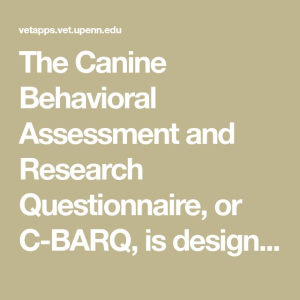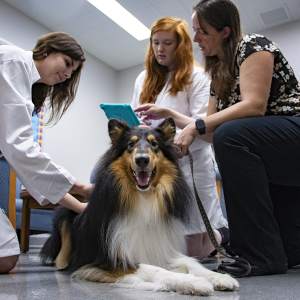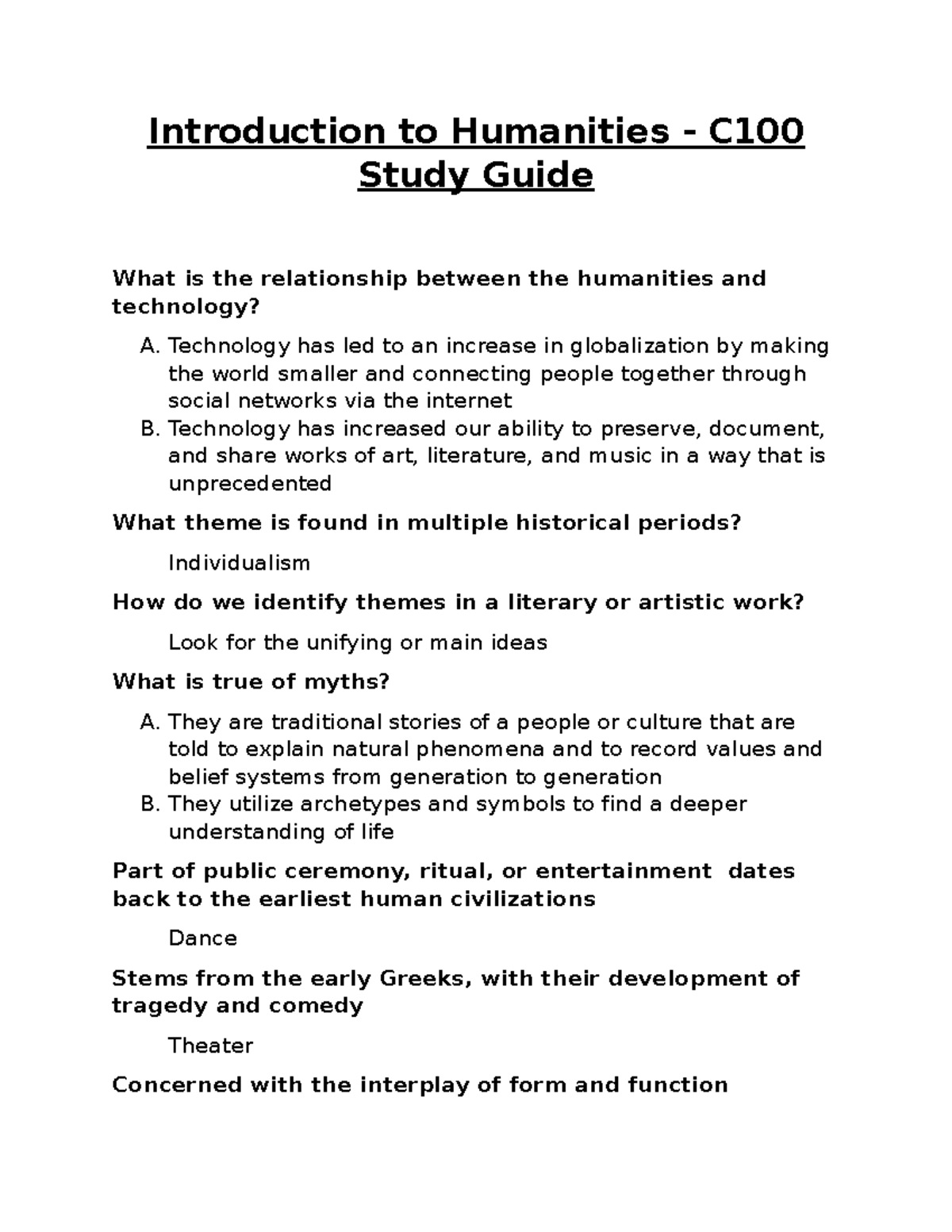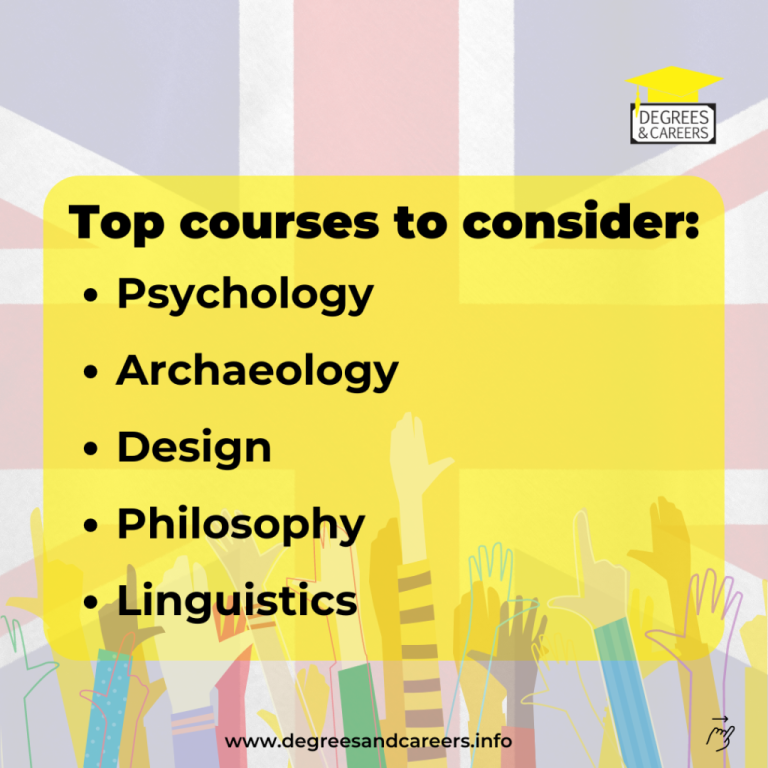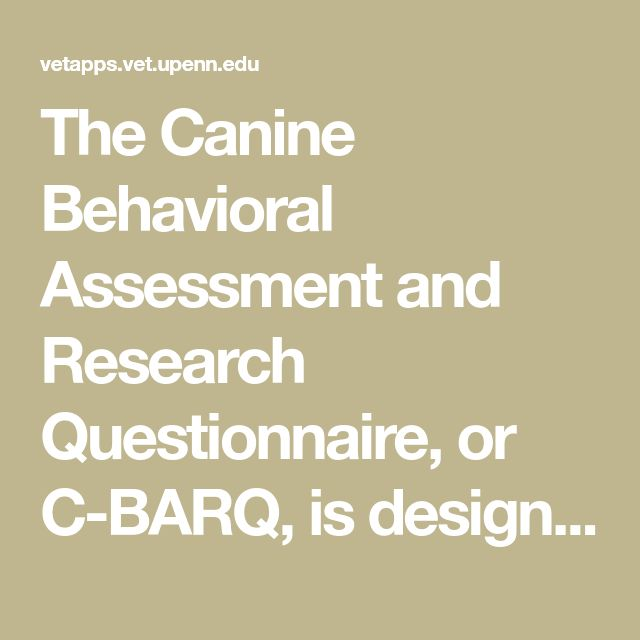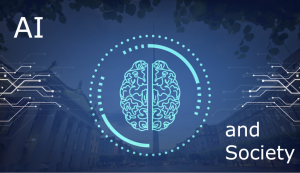Introductory humanities courses serve as a pivotal gateway for first-year students embarking on their academic journey. These courses are designed to engage and inspire students, sparking their interest in subjects that explore the complexity of human culture and creativity. As enrollment in arts and humanities continues to decline nationally, innovative programs aim to reinvigorate students’ passion through a revamped humanities curriculum reform. By emphasizing the intrinsic value of these subjects, introductory humanities courses can cultivate a deeper understanding of literature, philosophy, and art. Engaging humanities education not only fosters critical thinking but also enhances the overall academic experience for students, encouraging sustained interest and enrollment in the arts and humanities fields throughout their collegiate journey.
Courses aimed at introducing students to the fields of arts and humanities hold immense importance in shaping their educational experiences. Known as first-year humanities courses, these offerings create foundational opportunities for exploration and critical discourse on varied aspects of human existence. With a focus on contemporary themes and relevant issues, this approach aims to transform arts and humanities enrollment trends by making these studies more accessible and appealing. The interplay of literature, philosophy, and the arts within these courses reinforces the connection between students and the broader human narrative. As we shift our perspective towards a more inclusive and engaging humanities education, the potential to inspire future scholars becomes increasingly evident.
Rethinking Introductory Humanities Courses
In response to the declining interest in humanities among undergraduates, educators are reimagining introductory humanities courses to create a more vibrant and engaging curriculum. Dean Sean Kelly has spearheaded this initiative at Harvard, introducing nine new courses designed to resonate more deeply with first-year students. The goal is not only to engage students but to foster a greater appreciation for the arts and humanities as a whole. By offering diverse topics within the humanities curriculum, such as ‘Migration and Border Crossing in Film and Photography’ and ‘The Human Sciences: Fundamentals and Basic Concepts’, institutions can draw in students who may have felt disconnected from traditional humanities pathways.
These revamped introductory courses are structured to emphasize relevance and accessibility, aiming to capture students’ interests early on. This approach is in stark contrast to previous semesters where standard introduction classes may not have effectively connected with the students’ personal experiences or contemporary societal themes. By utilizing innovative teaching methods and embracing modern subjects, these courses can reinvigorate student interest in the humanities and help sustain enrollment in these vital fields.
Engaging Humanities Education for First-Year Students
Engaging students in the humanities requires a rethinking of pedagogical approaches, particularly for first-year students who are at a pivotal moment in their academic journeys. The introduction of new courses focuses on interactivity and connection, facilitating discussions that resonate with students’ lives. For instance, courses like ‘Culture in Context’ allow students to explore cultural dynamics through various lenses, blending interdisciplinary perspectives that highlight the relevance of the humanities in understanding today’s world. This structure not only invites critical thinking but also encourages students to voice their unique perspectives.
In a climate where there is a noticeable shift in student interest, such innovative courses play a crucial role in redefining the future of humanities education. The emphasis on creating relatable content makes these courses more appealing, fostering a classroom environment that promotes active learning and participation. As students discover the intrinsic value of humanities education, they are likelier to remain engaged with these fields, potentially leading them to pursue related concentrations and further studies.
The Importance of Arts and Humanities Enrollment
The decline in arts and humanities enrollment has raised alarms across academic institutions, emphasizing the urgent need for innovative curricula that excite and motivate students. The reality that half of incoming students who express interest in humanities courses change their minds by the time they declare their concentrations illustrates a disconnect between student expectations and course offerings. To counteract this trend, it’s essential to revisit how introductory humanities courses are structured, ensuring they reflect the evolving interests and values of contemporary students.
Moreover, the introduction of engaging content, bolstered by compelling course structures, has the potential to attract students back into these disciplines. When institutions succeed in creating a dynamic learning experience, they not only increase enrollment but also cultivate a long-term appreciation for the arts and humanities. This shift is pivotal, as the aptly designed courses enable students to connect their personal interests with broader societal questions, thereby reinforcing the essential role of humanities in fostering well-rounded education.
Navigating the Canon Wars in Humanities Education
The historical debates known as the “Canon Wars” have influenced how introductory humanities courses are designed and perceived. These discussions, which centered around which major texts should define disciplines like English and art history, have complicated the development of introductory syllabi. Many educators argue that while these debates have expanded perspectives on literary and artistic greatness, they have also resulted in a lack of clarity for students about what they should be reading when they first encounter these disciplines.
Understanding the canon is crucial, yet it is equally important for introductory courses to transcend traditional boundaries and engage students with diverse voices and perspectives. As Dean Kelly pointed out, motivational factors for students often hinge on the perception of studying ‘great’ works. By blending classic texts with contemporary issues, educators can better equip students to approach the humanities with fresh eyes, encouraging them to explore beyond established canon boundaries while developing a robust understanding of the field.
Innovating with Arts and Humanities in Education
Innovation in arts and humanities education is essential for captivating the interest of today’s students. As part of a larger initiative, the introduction of nine new courses at Harvard aims to enhance students’ engagement with the humanities. This redesign is a thoughtful response to address waning interest and to present the humanities as dynamic and relevant to students’ lives. For example, courses that intertwine medical and health perspectives with the humanities can appeal to students interested in pursuing careers in health fields while also considering ethical and philosophical dimensions.
Through this reform effort, the emphasis is placed on creating an engaging curriculum that prioritizes not just the academic aspects of the humanities but also their practical application in everyday life. By effectively intertwining practical knowledge with theoretical understanding, these courses can cultivate a generation of students who appreciate the breadth and depth of the arts and humanities. This integrated approach not only fosters critical thinking but also instills a passion for humanities that may extend well beyond their academic careers.
Interiorizing the Value of Humanities Studies
It is essential for introductory humanities courses to focus on teaching students not just the content, but also the intrinsic value of engaging critically with literature, philosophy, and art. Dean Sean Kelly emphasizes that these courses should not merely highlight the instrumental benefits of the disciplines, but foster a deeper understanding of their significance to the human experience. By instilling an appreciation for humanity’s great works, students can develop a more nuanced perspective on their own identities and the world around them.
Courses that invite discussion and exploration of foundational topics in the humanities, such as moral philosophy and the essence of storytelling, help students internalize these values. This engagement enriches their personal development and shapes their capabilities as empathetic and informed individuals. As students learn to appreciate the inherent worth of these disciplines, they emerge more equipped to navigate the complexities of life while understanding the cultural narratives that have shaped human society.
Collaborative Learning in Humanities Education
A collaborative approach to humanities education can enhance students’ learning experiences and foster a sense of community among peers. The effort to combine traditional critical analysis with creative writing, as seen in courses like ‘Reading for Fiction Writers’, exemplifies how collaboration can enrich the humanities curriculum. By bringing together diverse methodologies and perspectives, students can better appreciate how different forms of expression influence one another, leading to a richer understanding of both the written word and creative practice.
Such collaborative courses also encourage students to actively engage with one another, exchanging ideas and interpretations in a dynamic learning environment. This interaction not only sharpens analytical skills but also promotes shared experiences, further enhancing students’ educational journeys. Through collaboration, students are better positioned to explore the arts and humanities collectively, fostering a deeper connection to the material and their peers alike.
Curriculum Reform to Enhance Student Engagement
Curriculum reform initiatives are critical in addressing declining enrollment in humanities courses. By evaluating and restructuring existing programs, educational institutions can create offerings that appeal to a broader range of interests and backgrounds. The selection of new courses at Harvard is a testament to this reformative approach, reflecting a commitment to delivering an engaging, relevant educational experience that resonates with students in the 21st century.
Through innovative course proposals and the introduction of new topics that reflect the current zeitgeist, such as film analysis and migration studies, institutions can motivate students to see the humanities as vital to their understanding of the world. This approach fosters not just enrollment but also a meaningful connection to the humanities that can enrich students’ academic and personal lives in profound ways.
The Impact of Engaging Storytelling in Humanities Education
Engaging storytelling is at the heart of many humanities courses and plays a pivotal role in capturing student interest. By exploring literature through the lens of various narratives, students can unlock new ways of understanding themselves and others. Courses that examine how storytelling shapes culture and individual identity, such as ‘Humanity, Technology, and Creation’, can lead to transformative learning experiences that resonate long after students leave the classroom.
As students analyze texts, they gain insight into the nuances of character development, thematic exploration, and cultural context, allowing them to appreciate the intricacies of human experience. This narrative-driven approach fosters empathy and critical thinking, emphasizing the importance of stories in understanding societal dynamics. By focusing on the power of storytelling, introductory humanities courses can become a crucial gateway to deeper engagement with the arts and humanities.
Frequently Asked Questions
What are introductory humanities courses and why are they important?
Introductory humanities courses are foundational classes designed for first-year students to explore disciplines such as literature, philosophy, and cultural studies. They are crucial for engaging students early in their academic journey, fostering critical thinking, and developing a deeper understanding of human culture and its complexities.
How do introductory arts courses differ from traditional humanities courses?
Introductory arts courses often focus on creative expression and performance, encompassing subjects like visual arts, theater, and music. They contrast with traditional humanities courses that typically emphasize critical analysis of texts and cultural concepts, appealing to students who thrive on active engagement and hands-on learning.
What is the goal of engaging humanities education in introductory courses?
The goal of engaging humanities education in introductory courses is to inspire first-year students by making the subjects relevant and accessible. These courses aim to ignite curiosity, encouraging students to appreciate the intrinsic value of the humanities while providing them with essential analytical and interpretative skills.
How can humanities curriculum reform impact first-year humanities courses?
Humanities curriculum reform can impact first-year humanities courses by introducing innovative topics and teaching methods that resonate with today’s students. This reform focuses on creating inclusive and diverse content that reflects varied human experiences, thus attracting higher enrollment and fostering a more engaged learning environment.
What types of topics are typically covered in first-year humanities courses?
First-year humanities courses often cover a wide range of topics including literature analysis, philosophical inquiries, cultural studies, and historical contexts. New offerings may include contemporary issues like migration in film, the intersection of technology and humanity, or explorations of narrative and identity, which are designed to capture student interest.
Why is there a focus on increasing arts and humanities enrollment in introductory courses?
There is a focus on increasing arts and humanities enrollment in introductory courses due to a national decline in interest in these fields. By redesigning course offerings to be more engaging and relevant, institutions aim to retain first-year students’ interest in the humanities, ensuring they appreciate the disciplines’ value in understanding the human experience.
What role do faculty play in shaping introductory humanities courses?
Faculty play a critical role in shaping introductory humanities courses through their expertise and creative course proposals. By collaborating and offering diverse perspectives, they can design classes that resonate with students’ interests and backgrounds, thereby enhancing the overall learning experience.
How do introductory humanities courses prepare students for future academic pursuits?
Introductory humanities courses prepare students for future academic pursuits by developing critical thinking, writing, and analytical skills. They provide foundational knowledge that allows students to delve deeper into specialized subjects later in their academic careers, ensuring a broad understanding of human culture.
What impact does reading and analyzing literature have in introductory humanities courses?
Reading and analyzing literature in introductory humanities courses helps students cultivate empathy, critical thinking, and interpretative skills. Engaging with diverse texts encourages students to reflect on their own experiences, fostering a deeper understanding of human emotions and societal contexts.
| Key Point | Description |
|---|---|
| Introduction of Nine New Courses | Initiated by Dean Sean Kelly to engage first-year students in the arts and humanities. |
| Response to Enrollment Decline | National trends show declining interest in humanities; Harvard statistics indicate half of interested students change their minds before declaring. |
| Inspiration from Philosophy Department | Philosophy’s success in increasing concentrators by shifting focus to fundamental human questions. |
| Diverse Course Offerings | Courses cover topics from health humanities to migration in film and literature. |
| Emphasis on Intrinsic Value of Humanities | Courses aim to enhance understanding of human experience rather than simply serving practical ends. |
Summary
Introductory humanities courses are crucial in shaping students’ understanding of the arts and humanities. With a focus on modernizing course content and addressing the decline in student enrollment, Harvard’s new initiative exemplifies how educational institutions can adapt to meet the interests and needs of the next generation of learners. By emphasizing the intrinsic value of understanding literature, philosophy, and culture, these courses are designed not only to attract students but also to enrich their perspectives, fostering a lifelong engagement with the humanities.


